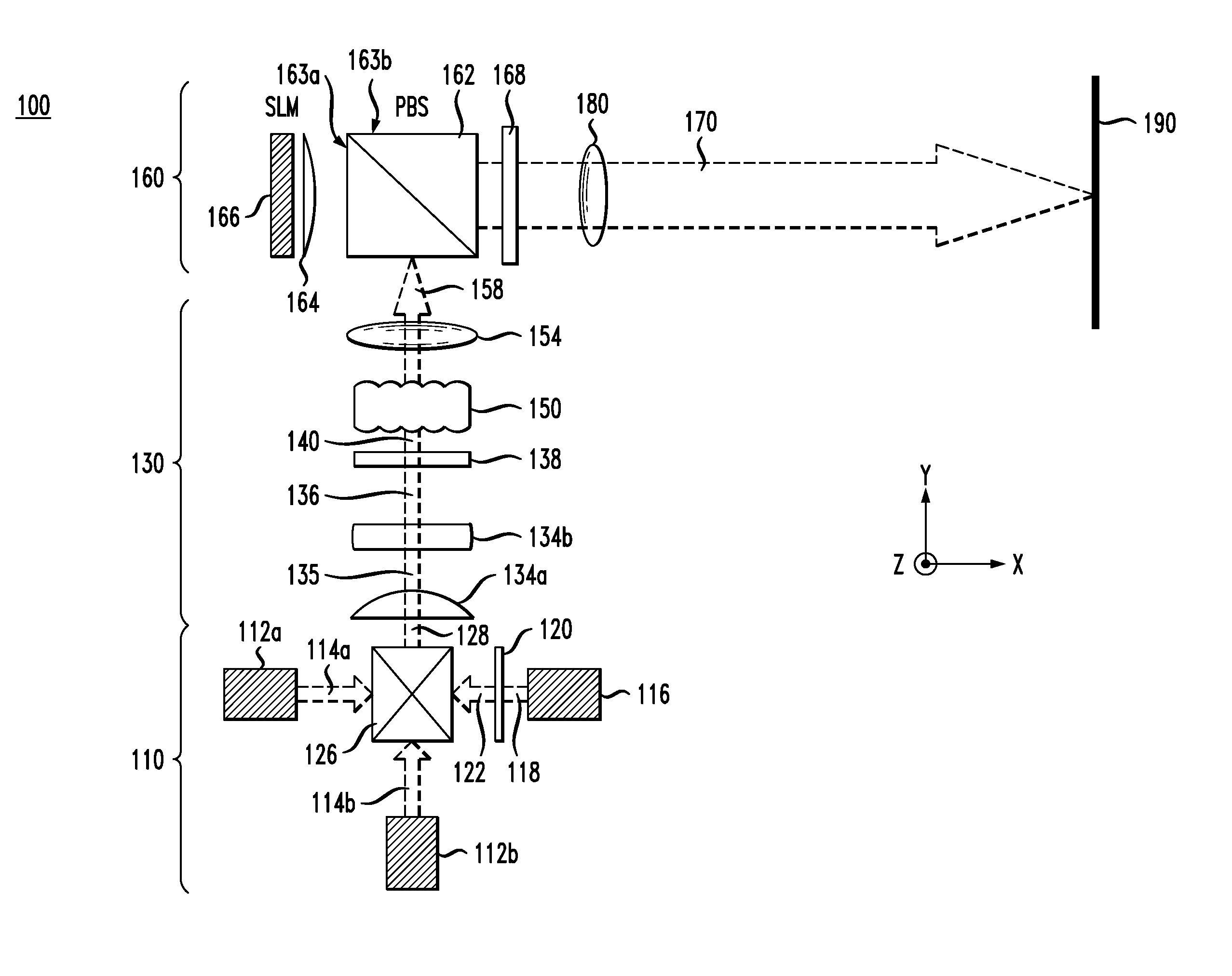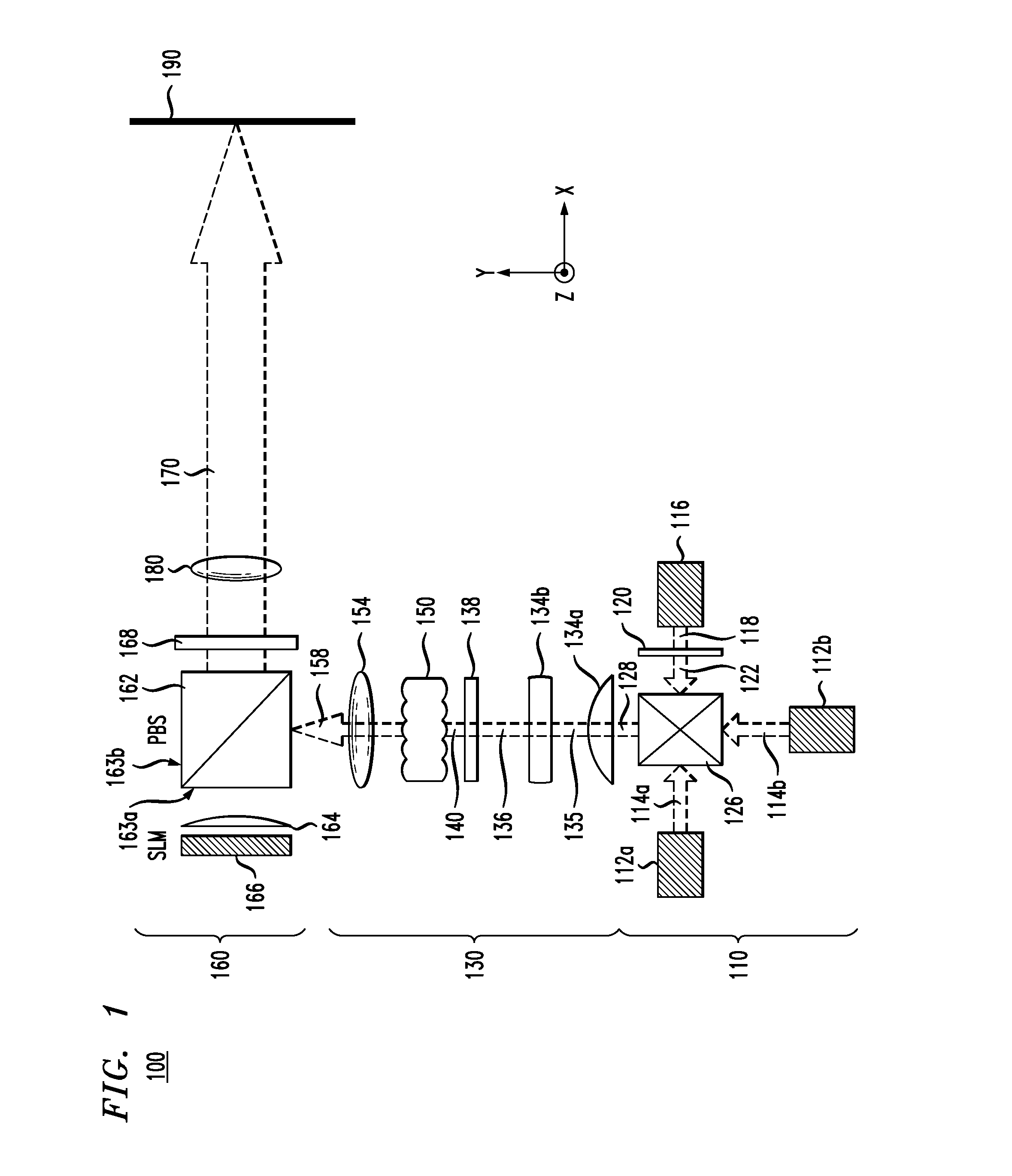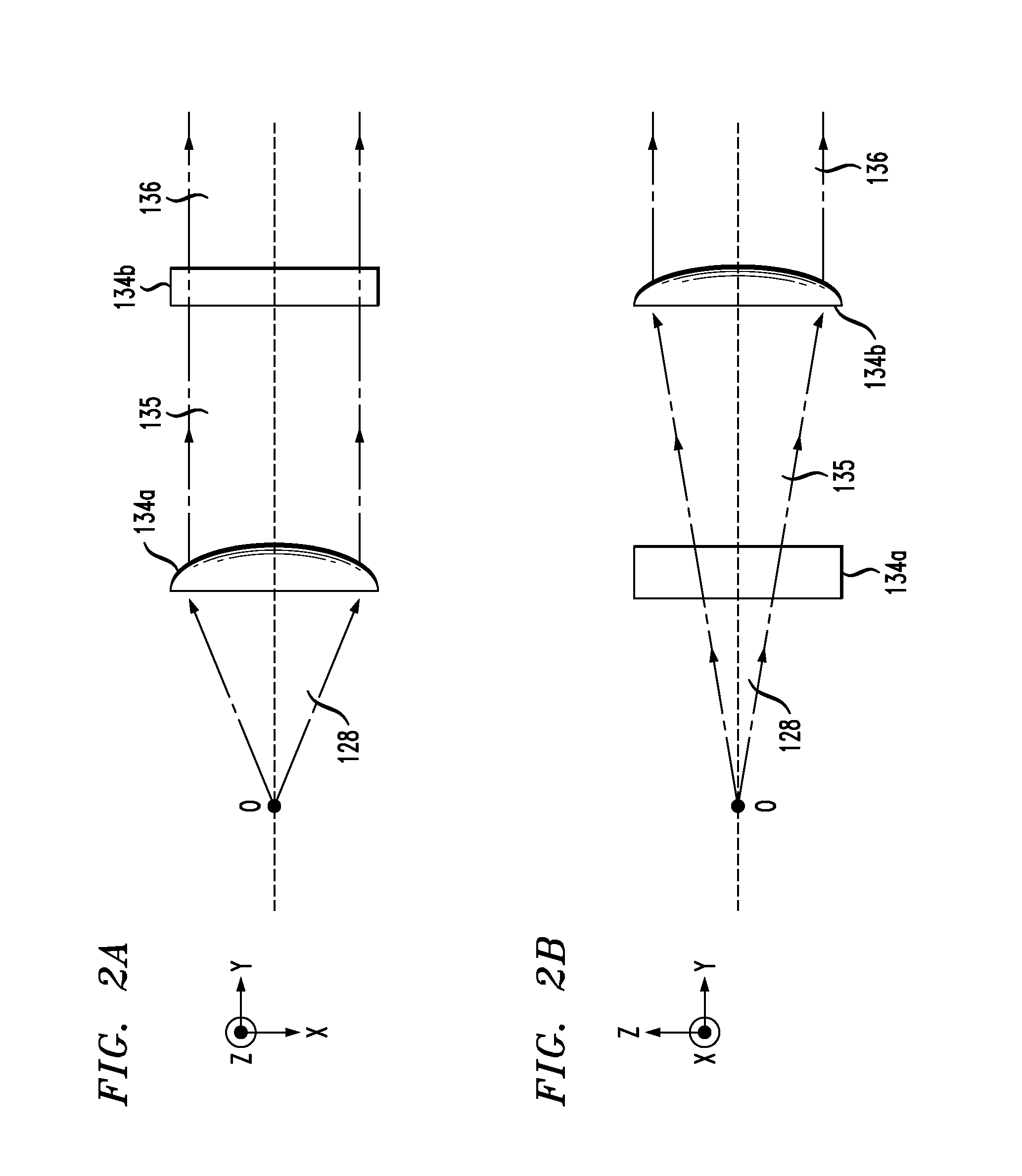Despeckling laser-image-projection system
a laser and projection system technology, applied in the field of image projectors and handheld electronic devices, can solve the problems of speckle phenomenon, the display screen of a cell phone, a personal digital assistant (pda), or a portable media player is typically too small to present most documents in their original full-page format, etc., and achieves high optical throughput, high temporal/spatial stability of illumination patches, and high illumination homogeneity
- Summary
- Abstract
- Description
- Claims
- Application Information
AI Technical Summary
Benefits of technology
Problems solved by technology
Method used
Image
Examples
Embodiment Construction
[0016]FIG. 1 shows a top view of a projector 100 according to one embodiment of the invention. Projector 100 has a laser light source 110 adapted to feed multi-colored light (e.g., red, green, and blue) through an optical beam-shaping (OBS) section 130 into a modulator section 160. Modulator section 160 generates a spatially intensity-modulated beam 170 that, after passing through a projection lens 180, forms a color image on a screen 190, which is not part of projector 100. In one embodiment, projection lens 180 is a compound lens comprising two or more individual lens pieces (not explicitly shown in FIG. 1). Although the term “screen” is used, it should be understood to include any suitable surface capable of supporting an image. For example, a screen can be an absorptive or reflective passive surface or active surface, such as a semiconductor surface, to enable further image processing.
[0017]Light source 110 has a set of three lasers 112a, 112b, and 116, each adapted to generate ...
PUM
 Login to View More
Login to View More Abstract
Description
Claims
Application Information
 Login to View More
Login to View More - R&D
- Intellectual Property
- Life Sciences
- Materials
- Tech Scout
- Unparalleled Data Quality
- Higher Quality Content
- 60% Fewer Hallucinations
Browse by: Latest US Patents, China's latest patents, Technical Efficacy Thesaurus, Application Domain, Technology Topic, Popular Technical Reports.
© 2025 PatSnap. All rights reserved.Legal|Privacy policy|Modern Slavery Act Transparency Statement|Sitemap|About US| Contact US: help@patsnap.com



